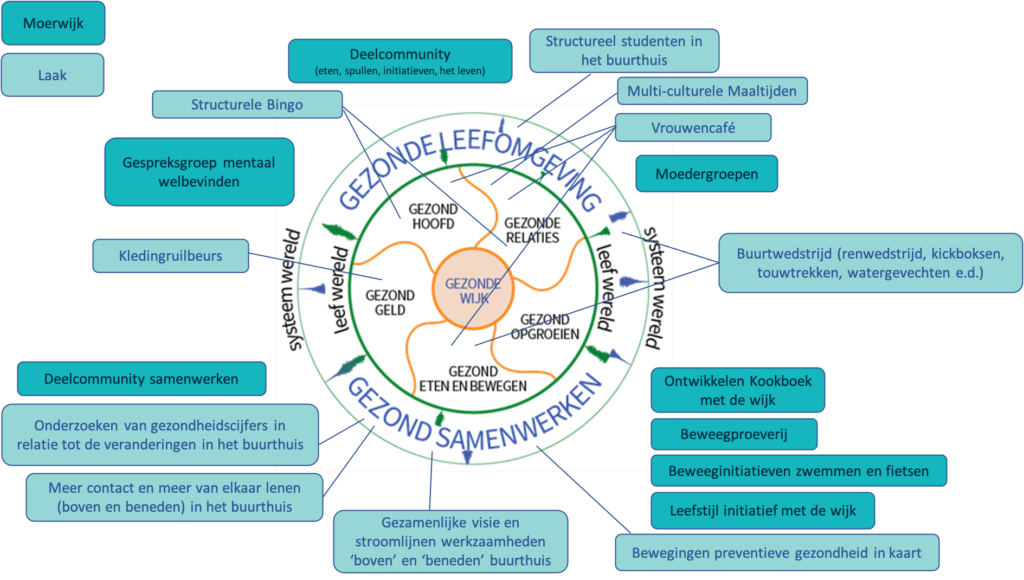A Participatory Action Research to connect the system world and the living environment, so that residents, connectors, and professionals can together create a healthier neighborhood.
![]()

A Participatory Action Research to connect the system world and the living environment, so that residents, connectors, and professionals can together create a healthier neighborhood.
Facilitating residents (with lived experience) and organizations (with evidence-based solutions) to co-create plans together – or to strengthen existing plans – and implement them focusing on preventive health.
The PAR highlighted that Healthy Upbringing, Healthy Living Environment, and Healthy Collaboration are the key themes. During the process, we observed that many of these themes overlap. Focus groups were organized on each of these themes, where participants reflected on the results, brainstormed possibilities, and co-created appropriate action plans on the prioritized ideas and initiatives currently being carried out by them.
In addition to an initiative to develop a ‘healthy on a budget’ cookbook with the neighborhood and physical activity initiatives, an initiative emerged to create a “sharing community” in Moerwijk. The focus here is on developing a community where food, items, ideas, and activities are shared. Efforts have been made to bring together all resident initiatives in the neighborhood to strengthen mutual sharing and make it easier to refer to each other’s activities.
The theme of Healthy Living Environment proves to be crucial in all discussions. There is a strong desire to work together towards a situation where children can play safely outside again. There is a need to create more awareness about how outdoor spaces are used and how a sustainable ecosystem can be developed around the food process. Regarding Healthy Collaboration, a movement is emerging among both residents and professional organizations to seek trust, ownership, frameworks, visibility, and sustainability in shaping collaboration and restoring trust.
In the Schipperskwartier, the community center proves to be an incredibly important hub (possibly due to the lack of other facilities) for various activities, both within and outside preventive health. Because the community center is perceived as functioning inadequately by those involved, initiatives have arisen that primarily focus on “healing” the community center. A well-functioning community center creates more space for new activities related to preventive health.
Furthermore, residents and professionals have designed initiatives to collaborate on implementing, among other things, a regular bingo for the elderly, a clothing swap, and multicultural meals.
Due to the fact that initiatives on various themes reinforce each other and are being implemented around the same time, momentum is created; this is crucial to truly make an impact given the cyclical nature of the issues in the neighborhood.
The visualization below shows the initiatives that have emerged in Moerwijk and Laak around the various themes.

In addition to the concrete action plans that have emerged from the PAR, we also observed an increase in the innovative capacity of residents and professionals together. Partly because residents and professionals found each other and also because they discovered that they could develop promising plans themselves – together – even outside the focus group sessions and building on the initiatives and action plans that emerged in the focus groups. We also see an increase in the self-confidence of residents, especially. In several places, residents showcase their initiatives, inspiring other residents in the process.
However, we see that this movement is still fragile. Prejudices and assumptions from those involved sometimes hinder collaboration. Motivation quickly decreases with small misunderstandings. However, this motivation increases again when those involved can express their grievances and feel heard, and in this (individual) conversation, they discover new opportunities themselves.
Marieke Kessel from Lijn1 wrote an article for Healthy & Happy The Hague about our PAR and how participants experienced this process. The final report with more detailed information about the outcomes, findings, and conclusions from this PAR will be published soon (links in the menu).